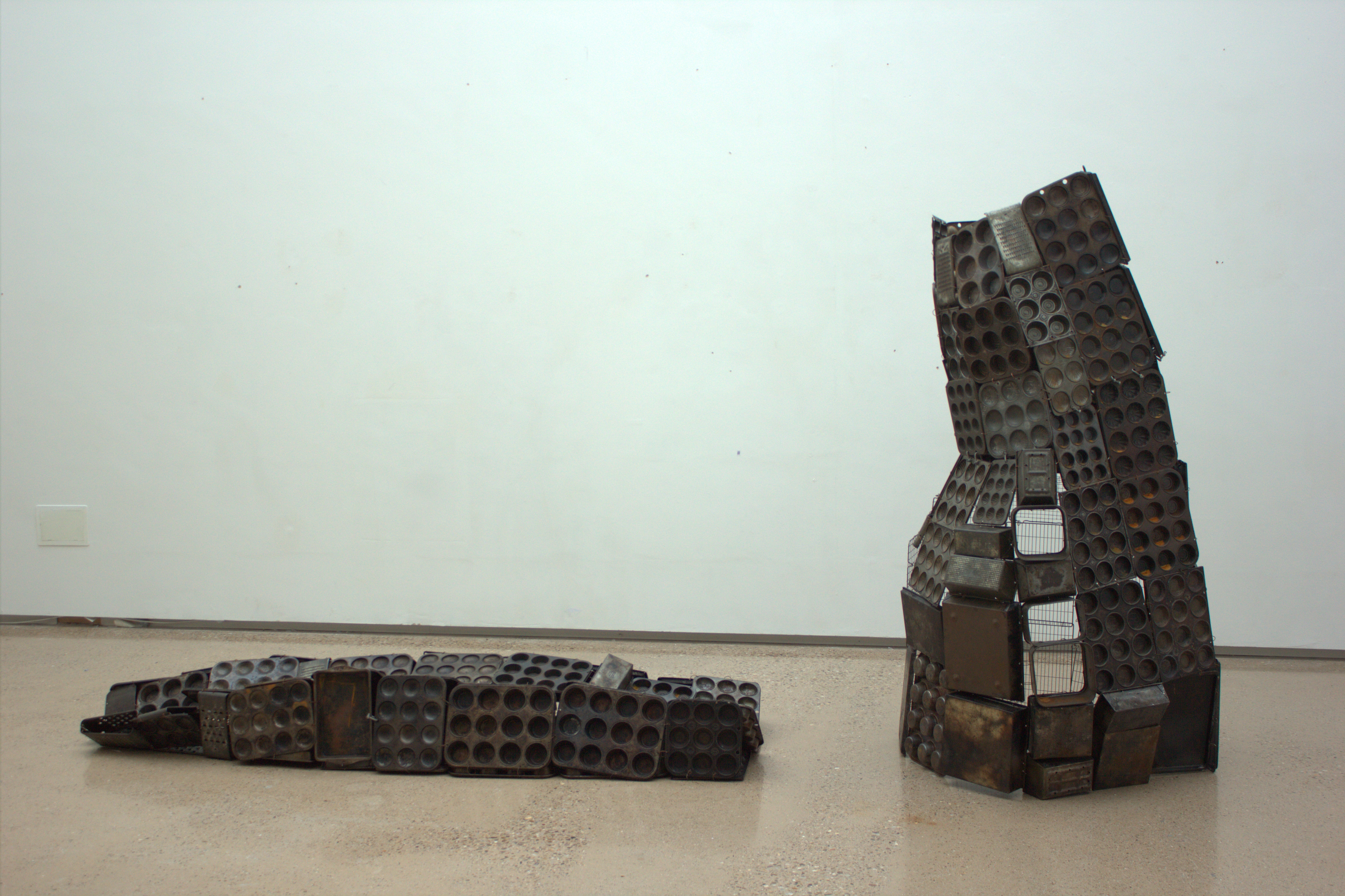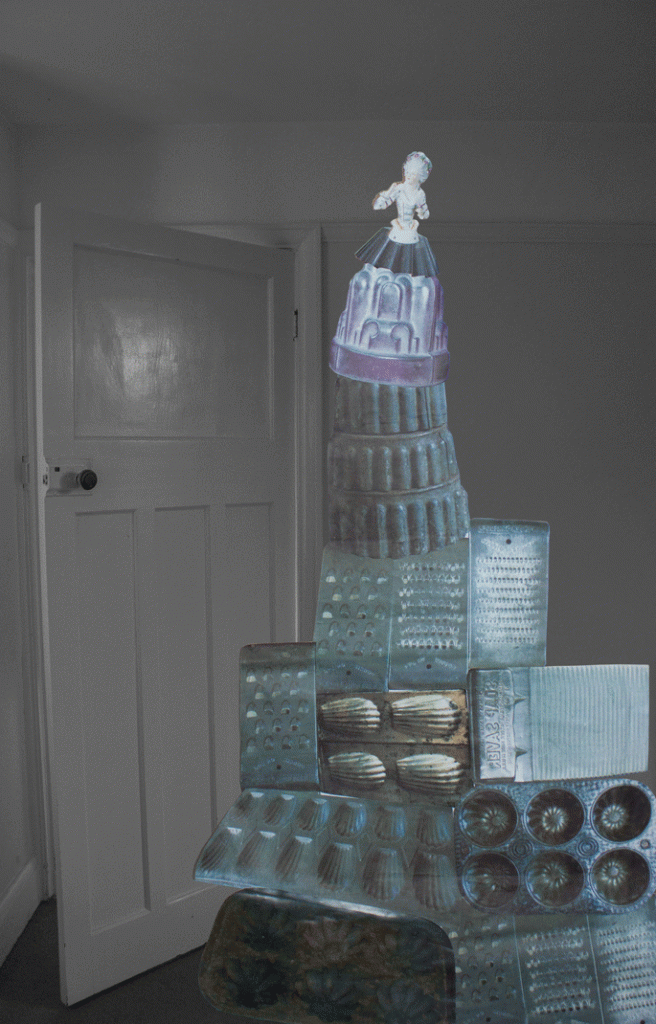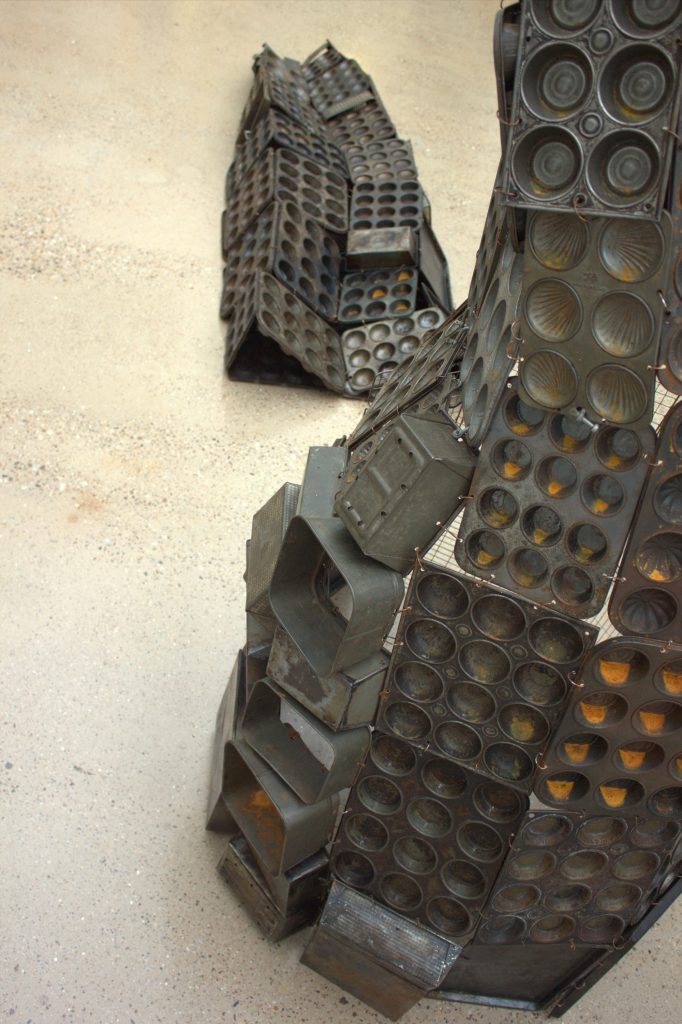
Materials: Kitchenalia, copper coated steel rings
An un-mountain
Like an ill-fitted garment
No longer worn
But slumped on the floor
Wearing itself
As only it could
In 2016, Forrest-Beckett’s sculptural language started to become bent out of shape.

Striving to build a monumental mountain, loosely assembled using ill-fitting items, became the tipping point.
Endless attempts to prop-up a deflated mountain, left her engorged, as it concertina around her.
Too consumed trying to conquer this sculptural obstacle, it was not until she began to loosen her grip and get to grips with the constraints that she had set myself, when she started to imagine how comical this impossible performance must have looked from the outside.
In ‘The Split and the Structure’; a collection of 28 essays written by Rudolf Arnheim and published in 1996, Arnheim shares his views and perspective on the study of visual perception and the arts, applied using the principles of Gestalt psychology [1]. In his essay ‘The Echo of the Mountain’, Arnheim makes more than one analogy to compare works of art with works of nature. Whether drawing upon knowledge, lived experience, intuition or the imagination, Arnheim brings mountains to mind, to consider the creative act of an artist, as an act of personification, in which, the artist attributes human characteristics onto something non-human, as a means to ’embody’ the ‘dynamic…nature’ of indeterminate events, making the art work a symbol of mental strength, in which, the viewer can confront life’s ‘mysteries and problems…challenges, threats’.
Illustrating the artist’s world as ‘a forest of symbols’, Arnheim states:
“Since forces are felt but are as abstract as electricity or gravitation, it is the artists’ task to make the strivings of the mind perceivable by seeing them symbolised in the behaviour of the environment.“

Throughout this essay, Arnheim reflects upon the ‘impediments of the body’ in relation to ‘the ease of the mind’s mobility’. Comparing emotional patterns of behaviour that have a tendency to fluctuate and ‘abstract feelings’ which are not easily defined, to the ‘peaks and valleys’ of a sublime landscape, he refers to the oxymoronic phrase ‘aspirations weakness’, to draw his readers attention to the precarious ‘edges of a precipice’, to reconsider the psychological drives that underpin ambition, especially with a view to a change of decision or action, when faced with danger. [2]
[1] Britannica. (n.d.) Gestalt psychology. Retrieved from: https://www.britannica.com/science/Gestalt-psychology. Source cited: 20th January, 2017
Gestalt theory emphasizes that the whole of anything is greater than its parts. That is, the attributes of the whole are not deducible from analysis of the parts in isolation. The word Gestalt is used in modern German to mean the way a thing has been “placed,” or “put together.” There is no exact equivalent in English. “Form” and “shape” are the usual translations; in psychology the word is often interpreted as “pattern” or “configuration.”
Gestalt theory originated in Austria and Germany as a reaction against the associationist and structural schools’ atomistic orientation (an approach which fragmented experience into distinct and unrelated elements). Gestalt studies made use instead of phenomenology. This method, with a tradition going back to Johann Wolfgang von Goethe, involves nothing more than the description of direct psychological experience, with no restrictions on what is permissible in the description. Gestalt psychology was in part an attempt to add a humanistic dimension to what was considered a sterile approach to the scientific study of mental life. Gestalt psychology further sought to encompass the qualities of form, meaning, and value that prevailing psychologists had either ignored or presumed to fall outside the boundaries of science.
[2] Rudolph Arnheim. ‘The Split and the Structure’. University of California Press. 1996. p92-96